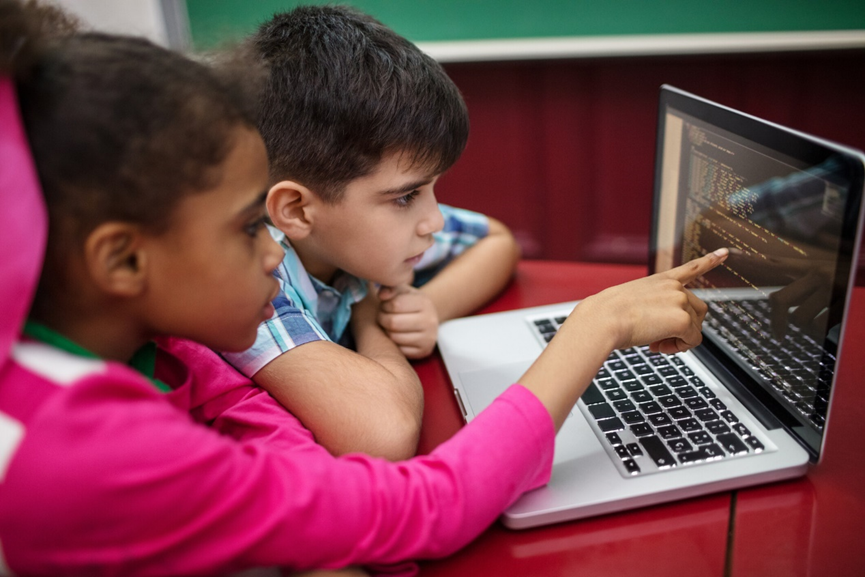Digital tools can be applied in the education sector to nurture students' curiosity and creativity.
Image source:Getty Images
Rahmin Bender-Salazar
PhD in Philosophy, University of Galway
Breanne Pitt
Research Fellow at Trinity College Dublin's Strategic Intelligence Program, PhD Candidate
Christian Roth
Researcher and lecturer at Utrecht University, media psychologist
Curiosity has always been an important trait, and in today's complex world, it’s more essential than ever.
However, our education system often focuses solely on "exam-oriented education," neglecting the nurturing of curiosity and creativity.
Tools like interactive digital storytelling, systems thinking, and mapping can help us rethink how to approach thinking education in a complex, diverse world.
Technological advancements and the increasing interconnectedness of things are rapidly accelerating, driving an ever-growing demand for innovation. To meet today’s global need for effective solutions, the ability to understand, learn, and experiment has become essential across organizations. To nurture these capabilities, we must first reintroduce the cultivation of curiosity into our education systems.Curiosity is an essential condition for learning—no matter the form it takes, whether inside or outside the classroom, and regardless of a student’s age, background, educational level, or geographic location. By fostering curiosity through technology, storytelling, and a systems perspective, we empower students to navigate an increasingly complex world and discover innovative solutions to tackle the interconnected global challenges of tomorrow.Curiosity stems from the desire to explore the novel and unexpected—it forms the foundation of our ability to learn and tackle complex problems. It encourages people to embrace new ideas, and the brain naturally becomes more receptive to information that sparks curiosity.In the learning environment, numerous tools hold promise for fostering curiosity and enriching educational content. For instance, systems thinking and mapping can reveal the intricate connections between various elements in a given context; design thinking and research methodologies nurture creativity while encouraging experimentation with innovative ideas; and Interactive Digital Narratives (IDNs)—a form of narrative expression within digital interactive media—serve as a powerful tool for self-directed learning through engaging, multi-layered stories.So, the real question is how we can use these tools to bring curiosity back into the classroom.The Development of Curiosity-Based EducationFrom ancient Greece to the Renaissance humanism, teachers and educators of the past used these examples to nurture students' creativity and curiosity. In humanism, diverse and imaginative approaches emphasized the study of classical texts and the development of critical thinking—yet today, educational institutions are increasingly embracing "exam-oriented education."To foster the social innovation needed to thrive in an ever-evolving and challenging world, students—from all backgrounds—must cultivate imagination, reflective thinking, a collaborative mindset, and curiosity—skills that simply can’t be developed through standardized learning alone.Cultivating curiosity fosters cognitive development, enabling collaborative innovation and sparking an intrinsic drive to explore and understand the world. These ideas about curiosity and learning extend far beyond traditional notions of classroom spaces, students, and teaching methods. Elements such as storytelling, technology, systems thinking, creative brainstorming, hands-on experimentation, and reflective practices all play a crucial role in addressing this challenge. Moreover, this sense of curiosity—when combined with a deeper appreciation for the interconnectedness of society and ecosystems—alongside an inclusive embrace of diverse forms of expression, thought, and artistic representation—can significantly enrich both the learning environment and the overall educational experience.Five Ways to Bring Curiosity Back to the ClassroomBy leveraging the power of Interactive Digital Narratives (IDNs), combined with systems thinking and mapping-based education, we can nurture a new generation of learners who are not only sensitive and creative but also proactive and deeply engaged in addressing global challenges.This method is supported by five core principles:1. The Power of Storytelling in Education:Stories have always been humanity’s fundamental way of making sense of the world—and of understanding our own place within it. Through IDN, we can craft immersive, interactive narratives that inspire students to explore complex systems and tackle global challenges. In these intricate storytelling experiences, learners are invited to shape outcomes through their own choices, fostering both agency and a strong sense of responsibility. Moreover, learners can even determine their own starting points, endpoints, and alternate paths, freely shaping how the story unfolds. This dynamic approach not only makes learning more engaging but also enhances its effectiveness, leaving a lasting impact on the educational experience.2. Interactive technology serves as a catalyst for change:Interactive technology is breaking down traditional barriers in education, making it possible to deliver personalized learning experiences tailored to each student’s unique needs. Traditional, linear, and static storytelling methods fall short of capturing the complexity of systemic challenges, but digital technologies offer a solution by enabling the creation of intricate, interactive narratives. By integrating IDN with systems-based education, we can design a learning environment where students can safely experiment within simulated spaces. Such constraints actually foster creativity, as learners are compelled to explore and solve problems under specific conditions—mirroring real-world learning scenarios in the process.3. The Role of Systems Thinking and Mapping:Systemic thinking is essential for understanding and addressing global challenges. Teaching students to recognize the interconnectedness among social, environmental, and economic systems can enhance their ability to think holistically and act effectively. Typically, many of our current thought patterns focus on bivariate analysis—examining relationships between just two variables—or framing issues in binary terms like "true or false" or "right or wrong." This approach is a legacy of standardized testing, which emphasizes straightforward, black-and-white answers. Yet, in the real world, few problems are ever this simple.Multivariate analysis takes into account multiple variables and their interactions, enabling a more accurate understanding of complex issues. Encouraging systems thinking helps students grasp the intricate relationships among various factors, sparks their curiosity, and enhances their ability to tackle challenging problems. IDN plays a pivotal role in this process, empowering learners to conceptualize and explore diverse topics and questions in ways that traditional education alone cannot achieve.4. Collaborative Design as a Method of Cooperative Learning:A collaborative design approach rooted in systems thinking enables educators, students, and education professionals to co-create learning experiences that address interdisciplinary, complex, deep, and systemic challenges. This method ensures that educational content is tailored to meet the diverse needs of learners. Moreover, collaborative design fosters students' sense of ownership and responsibility, boosting their engagement and motivation.5. Emphasizing the interaction among learning methods:The interdisciplinary approach aligns with the key learning methods emphasized by both systems education and IDN:- Creativity: Interactive storytelling fosters imaginative thinking, enhances problem-solving skills, and boosts engagement and enjoyment.
- Agency: Learners make meaningful choices, fostering autonomy, influence, and accountability.
- Learner scaffolding: A tailored experience that adapts to individual needs, provides personalized instruction, and guides learners toward understanding increasingly complex knowledge.
- Scope: Comprehensive, diverse, and inclusive content ensures students gain a deep and well-rounded understanding of the subject.
- Sandbox: By working within a boundary-defined environment, students can learn how to accumulate knowledge, develop innovative solutions, and even "carefully take risks" through play.
This approach helps leverage digital tools to foster learners' curiosity and creativity.
Image source:Pitt, Roth & Bender-Salazar
By integrating IDN and systemic education, we’re bringing curiosity back to the classroom—not just as an educational reform, but as a movement: a movement to equip the next generation with the skills and mindsets needed to tackle the world’s most pressing challenges.By leveraging the power of storytelling, interactive technologies, systems thinking, and collaborative design, we can create transformative learning experiences that inspire students and empower their abilities. Together, we can bring curiosity back to the classroom.
The above content solely represents the author's personal views.This article is translated from the World Economic Forum's Agenda blog; the Chinese version is for reference purposes only.Feel free to share this on WeChat Moments; please leave a comment below the post if you’d like to republish.
Translated by: Sun Qian | Edited by: Wang Can
The World Economic Forum is an independent and neutral platform designed to bring together diverse perspectives to discuss critical global, regional, and industry-specific issues.
Follow us on Weibo, WeChat Video Accounts, Douyin, and Xiaohongshu!
"World Economic Forum"






